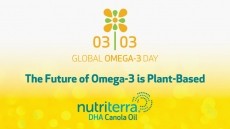Infant formulas evolve to replicate breast milk
nutritional ingredients within the updated EU regulatory framework,
and follow-on products and those aimed at mothers' are also
targeted by suppliers.
Infant formula is a highly emotive area, with watchdogs keeping a close eye on companies' marketing tactics lest they drift towards promoting their products as preferable to breast feeding.
While it is agreed that breastfeeding is the best way to ensure an infant receives the nutrients it needs in its first months, formulas are indispensable in cases where mothers are unable to feed their children - be it for health or logistical reasons. Mothers' desire to give their children the best possible start in life means that there is scope for fortification.
The latest market research on the overall baby food market, including milks and formulas, comes from Mintel, which estimates that the UK market was worth £329 million at retail in 2005.
Mintel has not measured the proportion of market made up of fortified formulas, but it noted that: "Vitamin/mineral fortified remains the most frequent claim in the sub-category, with products being enriched by a wide variety of vitamins and minerals such as vitamins A, B, C and E, calcium, iron and fibre, to promote healthy development of bone structure, immune system and the brain."
It has also observed that "functional ingredients continue to have a strong presence in the sub-category, with products enriched with ingredients such as prebiotics, probiotics and omega fatty acids".
Research and product development on the ingredient side has centred on replicating the healthy profile of breast milk as far as possible.
For example, BioGaia's Reuteri probiotic bacteria is isolated from human milk; two-years ago the Swedish company signed an agreement with Germany's Hipp GmbH & Co Vertrieb KG for its use in certain baby food products marketed in Europe.
It has continued to research the benefits of Reuteri for infants and young children, such as gastrointestinal complains and immunity.
Prebiotics like fructo-oligosaccharides and galacto-oligosaccharides, which make the environment in the gut more conducive to the survival of probiotic bacteria, also occur naturally in breast milk; as do the essential fatty acids ARA and DHA, which have been widely studied for their effects on cognitive and visual development.
This July the EU recast directive on infant formulas was approved by the standing committee, updating the previous directive with the latest technological developments in the field of nutritional ingredients.
The new directive sets out procedures of health claims and obtaining approval on products from the European Food Safety Authority (EFSA).
In terms of the technological developments, it gives manufacturers the flexibility to continue work in the3 fields of nutritional ingredients, such as prebiotics, probiotics and omega-3.
"It is good to have a clear indication of how to proceed in order to be a key player in the market," Roger Clarke, secretary general of the UK's Infant and Dietetic Foods Association, told NutraIngredients.com.
The infant formula market is closely tied to the birth rate, and some European players have expressed concern that the market will stagnate as a result of falling birth rates.
Moreover, there are indications that more mothers are choosing to breast feed their infants, according to Clarke, which would mean that they are buying less formulas.
Mothers are notoriously loyal to baby food brands, making it difficult for entrants in the 0 to six month market.
But the follow-on market is also a keen area of interest, Clarke said, who said that there is increased development in this, and healthy products for toddlers.
Martek Biosciences, which claims its microalgae-derived omega-3 is used in 80 percent of fortified formulas sold in the US, has been positioning for the last year to 'grow up' with consumers into baby and children's foods and beyond.
Canadian fish-derived omega-3 supplier Ocean Nutrition Canada has taken a slightly different tack, targeting mothers with an omega-3 profile that replicates that found in natural breast milk.
Most fish oil has a DHA:EPA ratio of 18:12, but breast milk 4:1. The company therefore last year introduced a new version of its Meg-3 fish oil from tuna oil with a closer, 5:1 ratio.
The new ingredient aims to help nursing mothers to maintain their own omega-3 levels in order to provide their offspring with the optimum amounts of the essential fatty acid.
Moreover, if a nursing mother does not have enough DHA in her diet, her own body's supplies are depleted in order to provide for the baby. There is some evidence to link this occurrence with post-partum depression.












